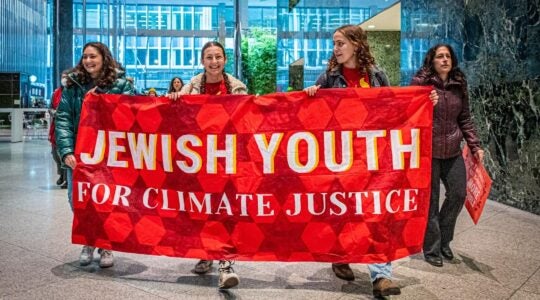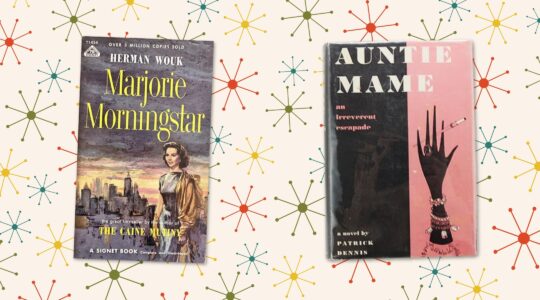Some years ago, a Jewish boy approached a rabbi to officiate at his upcoming wedding to a Christian girl. Before he got to the Christian girl part, the rabbi said, “Please don’t tell me you’re marrying someone who’s not Jewish.
I’ve already had two of those this week.”
The Jewish boy was hurt. As was the Christian girl. They got married anyway, choosing the Justice-of-the-Peace route. The Jewish boy knew little about Judaism, and the Christian girl worked in a church. They would have been any Jewish outreach worker’s nightmare.
An Editorial in The Jewish Week (“Time To Rethink Conversion Policy,” March 1) reported on Rabbi Elliot Cosgrove’s proposal to lower the bar on conversion. Citing his synagogue’s year-long conversion course as a barrier to interfaith couples who walk through his doors, Rabbi Cosgrove put forward a “trial balloon,” suggesting we convert the non-Jewish partner immediately, marry them, and then welcome them in with the hope that they will engage in Jewish life.
What would have happened had Rabbi Cosgrove’s offer been put on the table to the Jewish boy and Christian girl? We think we know, although we can’t say for sure. But we do know what ultimately became of them.
For several years they dabbled, attending an event here, a service there, but always retreating to their comfortable, assimilated existence. And one day, things started to change. They stumbled upon rabbis and teachers and everyday Jews who met them where they were but challenged them to reach infinitely higher. They encountered Jewish communities full of warmth and light and a yearning for the sacred.
The Jewish boy started to attend synagogue and study Torah. Together they began to experience what Abraham Joshua Heschel meant when he called Shabbat “a palace in time.” And one day, after much soul-searching and struggle and study, the Christian girl entered the mikveh and emerged as a Jewish girl. The Jewish boy went on to become the director of a Jewish federation. The now-Jewish girl went on to teach Jewish women. Today, they live full Jewish lives, their children attend Jewish schools and they make their home near Jerusalem.
We are that Jewish boy and no-longer-Christian girl.
Rabbi Cosgrove may feel in his “gut” as he put it, that instant conversions will reduce the difficulties he encounters daily. But our own experience tells us, without any doubt, that Rabbi Cosgrove’s trial balloon will lose air fast. Pronouncing someone a Jew to get them under the chuppah will not create a stampede toward Jewish life, but will undermine the hard work of many sincere converts.
Despite our disagreement, we are grateful to Rabbi Cosgrove for re-opening the conversation on intermarriage and conversion. Because that conversation has been dead for some time. When we began to write “Doublelife: One Family, Two Faiths and a Journey of Hope” (Longhill Press), which chronicles our own journey from intermarried to Jewish, we were surprised to learn that no other husband and wife had written about a similar journey, even though we know numerous families like ours. Indeed, there’s hardly been a book on either side of the intermarriage divide in nearly a decade. Most have accepted intermarriage as something that, like the weather, just happens.
But now Rabbi Cosgrove, in an effort to engage interfaith couples, seems to be suggesting that even the act of conversion be part of this weather pattern, that conversion be something that more or less just happens when interfaith couples wed. Rabbi Cosgrove likens his approach to gym membership — we join the gym and only then commit to working out.
Conversion is not gym membership. Conversion is a call to transform the soul, to stand anew at Mount Sinai, to join in the miraculous story of the Jewish people. A call to the sacred cannot be rushed — nor should it. And it may not be for everyone. But if Rabbi Cosgrove wants to stick with the gym analogy, then he might consider that many who join a gym give up on their exercise programs after a short time.
So let us begin a new conversation about intermarriage and conversion — but one that leaves behind the hand wringing over Jewish continuity and focuses instead on the immeasurable beauty of Judaism. Let us find a way to present Judaism so that non-Jewish spouses will want to be part of it. Let us determine our policies not by looking at our failures, but at our successes — those who have chosen to convert — and find out what moved them and how we can replicate it. Let us focus not just on having an open tent, but more importantly, on what is inside.
The naysayers will claim that we must lower the bar no matter what, or we’ll lose people. But we are living proof that there is a better way forward.
Harold Berman and Gayle Berman are co-authors of the recently released “Doublelife: One Family, Two Faiths and a Journey of Hope,” and the founders of J-Journey.org, dedicated to helping intermarried families who wish to explore becoming observant Jewish families.
The New York Jewish Week brings you the stories behind the headlines, keeping you connected to Jewish life in New York. Help sustain the reporting you trust by donating today.




